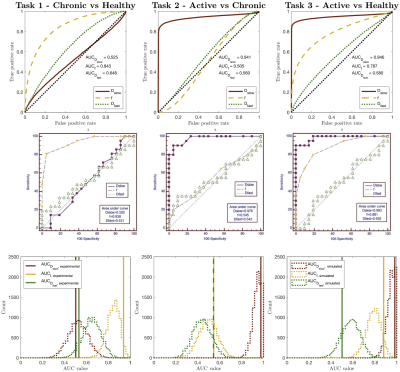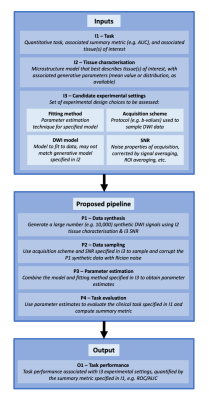Sean C Epstein1, Timothy J.P. Bray2, Margaret A. Hall-Craggs2, and Hui Zhang1
1Department of Computer Science & Centre for Medical Image Computing, University College London, London, United Kingdom, 2Centre for Medical Imaging, University College London, London, United Kingdom
1Department of Computer Science & Centre for Medical Image Computing, University College London, London, United Kingdom, 2Centre for Medical Imaging, University College London, London, United Kingdom
A method enabling task-specific assessment of DWI experimental design choices. Validation with clinical data confirms its accuracy; illustrative use cases demonstrate its advantages of current computational experimental design practice.

Figure 2 – Simulated (top row) vs. clinical (middle row) ROC curves for Zhao’s dataset7, for Tasks 1-3. The bottom row compares clinical AUC values to the distribution of simulated AUC values obtained by sub-sampling the pipeline dataset to match Zhao’s sample sizes. All ROC curves are qualitatively similar; the relative performance (AUC values) of different IVIM parameters are equal; all AUC values are in numerical agreement once clinical sample size is considered

